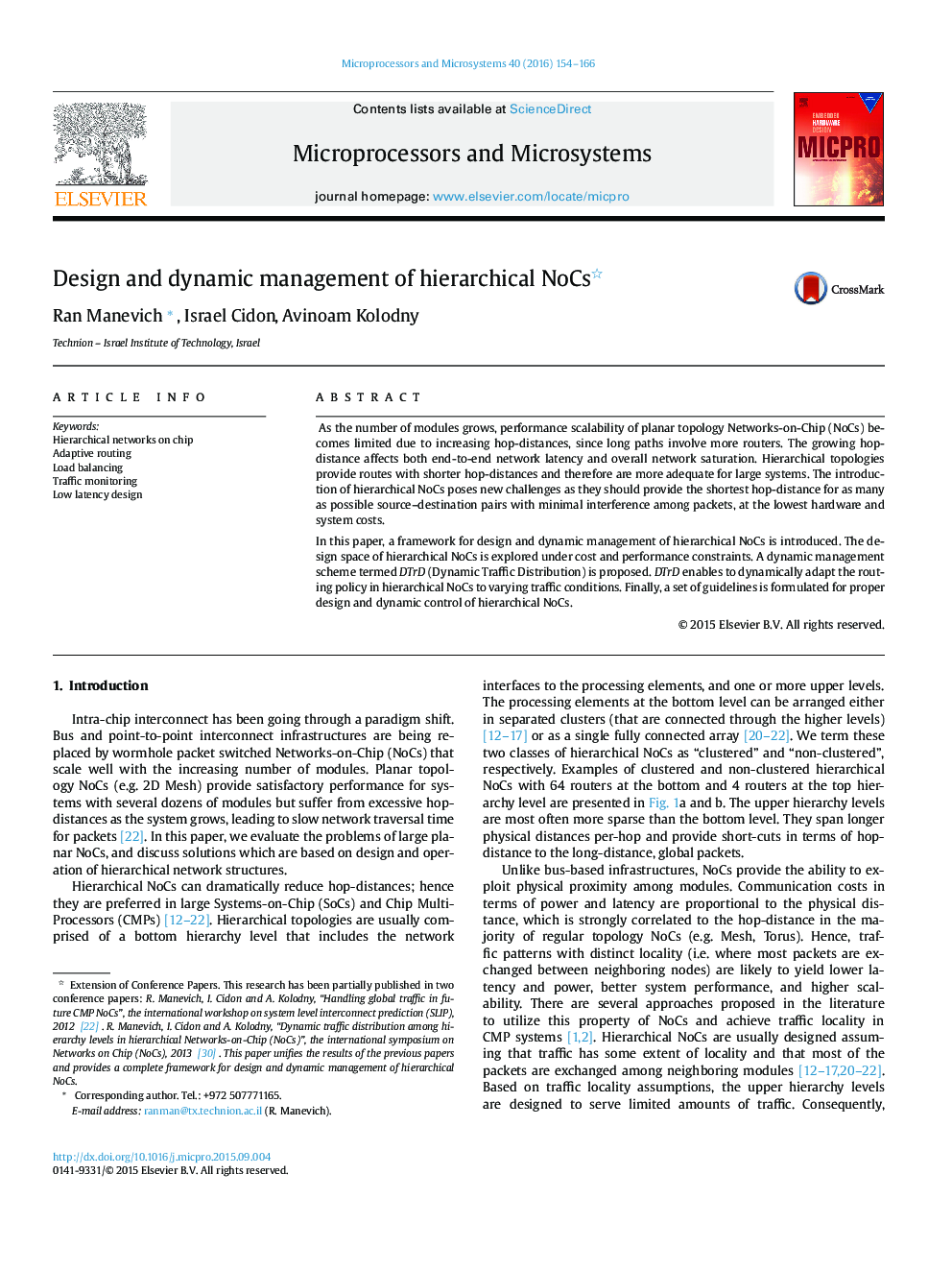| Article ID | Journal | Published Year | Pages | File Type |
|---|---|---|---|---|
| 462633 | Microprocessors and Microsystems | 2016 | 13 Pages |
As the number of modules grows, performance scalability of planar topology Networks-on-Chip (NoCs) becomes limited due to increasing hop-distances, since long paths involve more routers. The growing hop-distance affects both end-to-end network latency and overall network saturation. Hierarchical topologies provide routes with shorter hop-distances and therefore are more adequate for large systems. The introduction of hierarchical NoCs poses new challenges as they should provide the shortest hop-distance for as many as possible source–destination pairs with minimal interference among packets, at the lowest hardware and system costs.In this paper, a framework for design and dynamic management of hierarchical NoCs is introduced. The design space of hierarchical NoCs is explored under cost and performance constraints. A dynamic management scheme termed DTrD (Dynamic Traffic Distribution) is proposed. DTrD enables to dynamically adapt the routing policy in hierarchical NoCs to varying traffic conditions. Finally, a set of guidelines is formulated for proper design and dynamic control of hierarchical NoCs.
